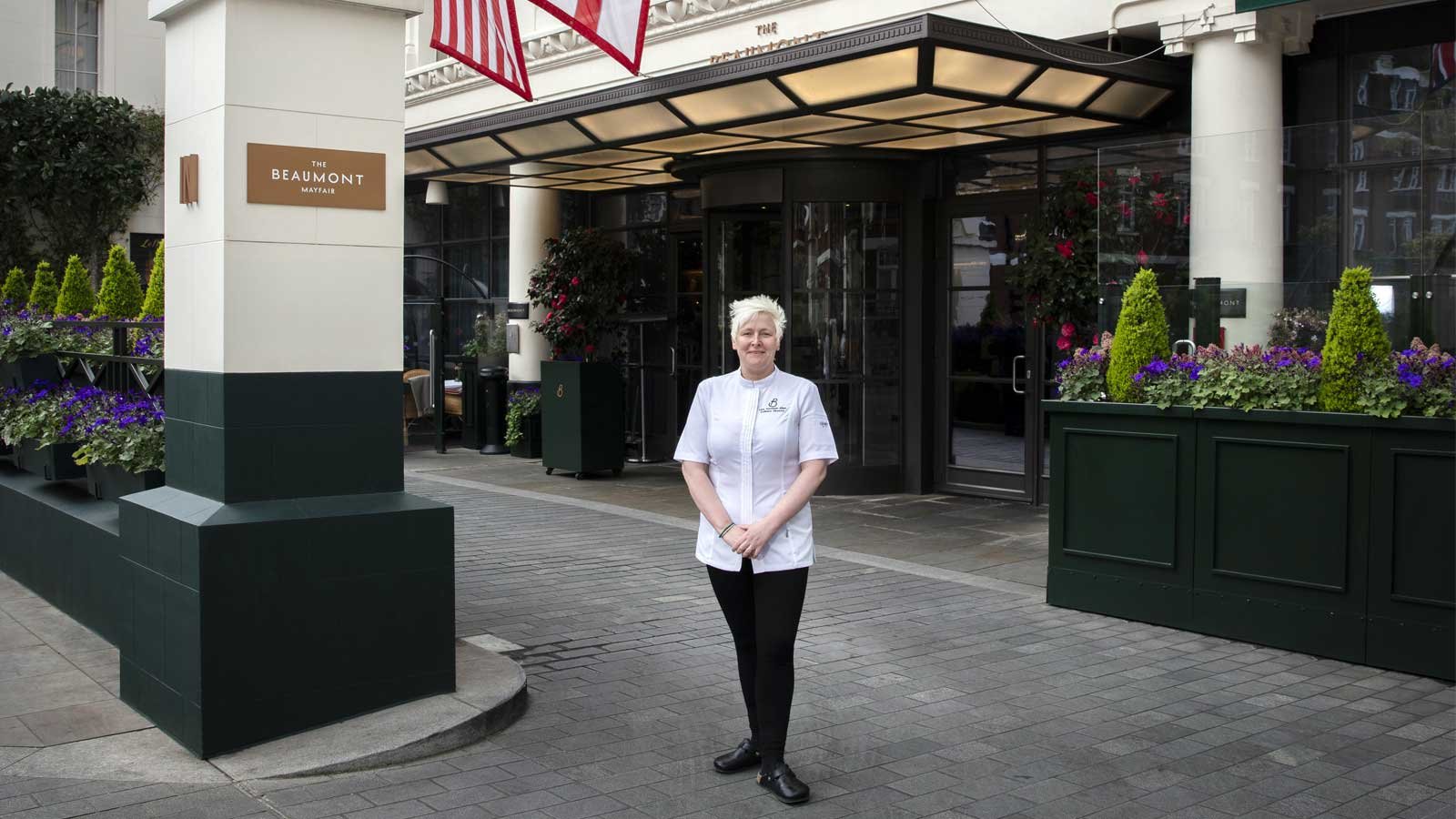Travel Trends
Hilton 2025: Balancing Growth with Travel Challenges

Saturday, July 26, 2025
In the second quarter of 2025, Hilton Worldwide Holdings Inc. posted impressive unit growth, expanding its global portfolio with new rooms and represents increase of 8 percent (approx) one year. However, despite this expansion, the hospitality giant experienced a one percent (approx) decline in revenue per available room (RevPAR) by signaling some of the ongoing challenges facing the broader travel and tourism industry. The mixed results come at a time when global travel trends, especially in the U.S., are influencing the demand for hotel stays, both domestically and internationally.
Strong Unit Growth, But RevPAR Decline
Hilton’s unit growth in Q2 2025 was a positive indicator of the company’s ability to expand even in a challenging market. With new hotels openings across its brands, Hilton’s global presence has continued to grow, showing resilience in its strategy despite the softer performance in revenue per available room. The expansion of rooms was part of Hilton’s broader strategy to take advantage of increasing domestic tourism, especially in the U.S. which has contributed significantly to the demand for Hilton properties.
However, the decline in RevPAR suggests that Hilton is facing the effects of several factors in the global travel market. These include fluctuating economic conditions, shifting travel patterns, and increasing competition. Despite these Hilton’s growth is the overall revenue per room has slipped slightly, which also reflects a larger trend in the hospitality sector, where demand in some regions is outpaced by supply and changing travel preferences and shaped the way people choose their accommodations.
U.S. Travel Trends Impacting Hilton’s Performance
The U.S. market continues to be a central component of Hilton’s growth. In Q2 2025, Hilton benefited from strong domestic tourism demand within the United States, particularly in urban and high-demand areas. While domestic travel has experienced a recovery post-pandemic and international travel especially from markets like Europe, Canada, and Asia and has been slower to rebound. This had a direct impact on Hilton’s RevPAR, which saw a decline largely due to reduced international visitor numbers.
- Domestic vs. International Travel: The rebound in U.S. domestic tourism has helped Hilton’s performance in certain regions. However, the international segment remains sluggish, with weaker demand from overseas markets, which traditionally provide a higher rate of room bookings.
- Changing Consumer Preferences: More U.S. travelers are booking stays at hotels in the country’s urban centers as they return to post-pandemic travel habits. However, travelers are also more price-conscious, seeking deals that have placed pressure on RevPAR across the hospitality industry.
These dynamics point to a shifting landscape where U.S. tourism trends play a pivotal role in Hilton’s unit growth, while global travel patterns and fluctuating international demand contribute to the challenges in revenue generation.
Hilton’s Strategic Focus on Global Expansion
Despite challenges in RevPAR, Hilton remains focused on expanding its global footprint and meeting evolving travel demands. The company opened many new hotels in Q2 2025, adding new rooms, and the growth is set to continue with these rooms.
The expansion of these luxury and lifestyle brands allows Hilton to tap into new markets and attract travelers seeking a more upscale or experiential stay. As global tourism trends shift, Hilton’s ability to adapt and position itself in key destinations will help mitigate the challenges faced by the broader market.
Factors Influencing the Travel and Tourism Market
Several external factors are shaping the global tourism industry, affecting both Hilton’s performance and the broader hospitality sector:
- Economic Pressures: Inflation and rising fuel prices have impacted travel costs, leading many tourists to reconsider their travel plans or opt for more budget-friendly accommodations.
- Government and Corporate Travel Spending: With continued cuts in government spending and corporate budgets, business travel demand remains weaker, which impacts revenue from corporate clients a segment Hilton has traditionally relied upon.
- Increased Competition: The rise of short-term rental options, such as Airbnb and boutique hotels, has changed the competitive landscape for traditional hotel chains like Hilton, influencing occupancy rates and pricing strategies.
Despite these challenges, Hilton’s commitment to expanding its global presence and increasing brand loyalty through sustainability initiatives and customer-focused offerings continues to drive growth, particularly in areas like eco-tourism and luxury travel.
Outlook for the Remainder of 2025
The company’s development pipeline remains strong, with significant hotel openings planned for the coming months, including new properties in high-demand urban centers and luxury destinations. Hilton’s ability to grow in key markets while navigating the complexities of international travel trends will be key to its long-term success.
Conclusion: Hilton’s Resilience Amid Changing Travel Dynamics
Hilton’s second-quarter performance for 2025 highlights the company’s resilience in the face of evolving travel dynamics. While unit growth remains strong, Hilton faces challenges in RevPAR due to the ongoing shifts in both domestic and international travel. U.S. tourism, while recovering, is undergoing changes in consumer behavior, impacting Hilton’s revenue from both leisure and business travelers. However, Hilton’s continued global expansion, focus on luxury and lifestyle brands, and adaptive strategies should enable the company to navigate these challenges and position itself for success as the travel market continues to evolve.
Travel Trends
Discover how Nigeria, India, Saudi Arabia, Japan, Spain, and Mexico Leading the Way in Travel Trends for 2025: What’s New To Know?

Sunday, July 27, 2025
With the world slowly reopening to the public after two tough years, travel trends are changing quickly. Countries including Nigeria, India, Saudi Arabia, Japan, Spain and Mexico have been leading the transition. Each of these countries is playing a part in these global travel trends, and it’s proving that what modern tourists want is constantly changing. With the ‘bleisure’ (business-leisure) boom in Nigeria and the immersive cultural experiences being offered in Mexico and Japan, these are the countries cashing in on the travel trends shaping 2020.
Nigeria, in particular, has begun to be noticed by industry analysts. Nigeria has been recognised as a huge reservoir of travel demand by no less a global consulting giant than Boston Consulting Group (BCG). Its cultural depth, religious variety and newfound focus on safety and infrastructure have put it at the intersection of durable tourism trends in 2025. But Nigeria not alone, other nations such as India, Saudi Arabia, Japan, Spain, and Mexico are also bullish with tourism strategies. Collectively, these countries are not just sparking new modes of travel, they’re preparing themselves to be pivotal players in the global $15 trillion leisure travel market of 2040.
Nigeria: Leading the Pack in Bleisure and Safety-Cautious Travel
Nigeria is leading the ‘bleisure’ revolution worldwide, as business travelers extend their itinerary for pleasure. With 73% of Nigerian travelers planning to mix business and leisure on their next trip, according to the BCG survey, Nigerians are leading the trend. This percent is well above one found in countries such as Germany (30%), UK (22%), or the US (15%). This realization therefore puts Nigerian travelers ahead of the tourism career by mixing work and play in ways that give businesses an opportunity to exploit these spaces and make a kill.
The Nigerian travel market is also particularly well adapted to safety-crazy travellers. With growing concerns about health and security, it is perhaps not surprising Nigeria’s recent investments into healthcare infrastructure, coupled with a focus on public safety, are expected to encourage increasing numbers of tourists whose top considerations are safety and wellness. This has been to the country’s benefit because of its rich cultural offering, its religious tourism and growing interest in health and safety, all of which has come to its advantage now, making it an attractive choice for the new “safety-seeking” traveler.
India: A Land of Culture for Spiritual and Heritage Tourism
India has always been a great country for the religious, cultural traveller. Come 2025, the country will still be wowing international travellers with its vibrant culture and increasing emphasis on wellness and sustainable tourism. With more and more travelers looking for an experiential, immersive holiday, India provides a variety of destinations that is unparalleled — whether it’s the ancient temples of Varanasi or the serene backwaters of Kerala.
Tourism in India has evolved to include not only historical sites but also wellness tourism, the likes of yoga retreats, Ayurveda healing and wellness getaways, becoming a key part of travel for both leisure and leisure-oriented business travelers. The Enhancements cater to a great demand for Spiritual and Restorative tourism, placing India at the top in the global market for wellness tourism. What’s more, global and local citizens are getting easier access with Indian government working on infrastructure upgrade and regional tourism promotion.
Luxury and Heritage Tourism Investment in Saudi Arabia
Launching Saudi Arabia’s Vision 2030, the Kingdom of Saudi Arabia has embraced the diverse tourism experiences that the country has to offer and has developed a tourism system and infrastructure that has positioned the Kingdom to attract increasing numbers of international visitors to the land of Saudi”.Generally speaking, Vision 2030 has thrust Saudi Arabia onto the world stage of tourism. With new cultural and entertainment attractions, such as the historic city of Al-Ula, and the Red Sea Project, Saudi Arabia is setting its sights on becoming a can’t-miss destination for the world’s high spending travelers. The Kingdom’s investments in cutting-edge resorts, upscale hotels, cultural festivals – all of it is changing the way you experience the Middle East.
And even while it draws more international tourists to the luxury of its offerings, the country is also marketing a deep dive into its rich history, putting on display ancient archaeological sites that go back thousands of years. This blend of heritage and elegance will attract tourists looking for culture and luxury in equal measures, now showcasing Saudi’s role in the luxury tourism sector.
Japan: A world leader in technology and sustainability
For years, Japan has been known for futuristic technology, but 2025 will also see it become one of the leading ecotourism destinations on our planet. As eco-friendly travel continues to move to the forefront, Japan has paved a path of high-tech experiences that boost efficiency but also decrease the ill effects of tourism on the environment. From AI-guided Japanese travel guides to the robotic concierge services, here are five examples to illustrate how Japan’s tourism tech revolution is redefining custom travel.
Furthermore, Japan’s dedication to sustainable tourism can be seen in its rural eco-tourism, which allows travellers to enjoy a true Japanese experience in the authentic Japanese countryside devoid of traffic and urbania. This increasing focus on decent sustainability and tech-forward travel is drawing an increasing number of eco-conscious travellers to Japan, thereby placing Japan on the forefront of advancing technology and sustainability without stifling cultural development.
Spain in Top 5 for Travelers Seeking Wellness, Cultural and Food Tourism
The country draws millions of tourists each year, who come for its sun, sand, culture and cuisine. Spain is catching up the increasing fashion of wellness tourism, in 2025 traveller can find a variety of wellness retreats and luxury spas specialized on health, relaxation and rejuvenation. Along the Mediterranean coast to the Balearic Islands, Spain’s wellness resorts are gaining worldwide recognition for their emphasis on natural healing, mindfulness and fitness.
And beyond wellness, Spain’s varied cultural offerings — from Andalusia’s flamenco dance to Barcelona’s world-famous architecture — make it a top cultural tourism destination. Spain also is benefiting from a combination of celebrity chefs and culinary innovation, playing into the burgeoning trend of food tourism. The wellness, culture, and food tourism blend positions Spain as a multi-faceted country with something for everyone.SOCKSBOXESCAPPes and culture, foodie tourists and general lovers of wellness making the country a diverse draw.
Mexico: Diving into Immersive Travel and Cultural Spectacles
Mexico is fast becoming a world hub for immersive cultural tourism, giving visitors a chance to dive deep into the country’s rich history, diverse cuisine and local traditions. Its wealth of indigenous culture, combined with world-class beach destinations, make it an attractive destination for travellers who seek adventure alongside cultural experience. This new wave of interest for Mexico’s traditional festivals, such as Día de los Muertos and Carnival, combined with the rise for visitors looking to seek authentic cultural experiences, prepares Mexico to receive new people who are joining this growing global movement.
The nation is also working on developing its eco-tourism sector with several areas already embracing eco-friendly practices to preserve its natural radiance and also provide exciting pledge-filled experiences to tourists. As travellers grow more aware of their impact on the Earth, Mexico’s focus on protecting its rare ecologies while providing responsible tourism leaves it well placed for the future of global tourism.
The Impact on Global Tourism
The travel trends that emerged in countries such as Nigeria, India, Saudi Arabia, Japan, Spain and Mexico, also indicate a significant departure in the way travelers plan vacations. More and more, they are looking for more meaningful experiences, more immersive experiences, and not just to see.” Call it a convergence of business and leisure,an emphasis on health and safety from entering and leaving a destination, cultural and wellness escapades away from the grid or a more meaningful connection to the self and the places they visit, travel experiences are increasingly adopting a more exploratory pace and mindset.
For tourism, these new trends are a chance to tailor their product offerings to what they need to meet the requirements of the modern traveler. As long as these countries keep innovating and building up their tourism infrastructure, they’re not just competing today and preparing for long-term growth; they’re also influencing the future of international travel.
In embracing pleasures such as the bleisure, local culture, well-being and sustainability, they are heralding a new generation of tourism, one that prioritizes experience, safety and togetherness. As global tourism continues to grow in the decades to come, destinations such as Nigeria, India, Saudi Arabia, Japan, Spain and Mexico belong on the leading edge of this exciting transition.
Travel Trends
The Beaumont Mayfair announces September opening of Rosi

This September, The Beaumont Mayfair will embark on an exciting new chapter in the hotel’s culinary story with the launch of Rosi, led by acclaimed chef Lisa Goodwin-Allen, who has been newly appointed as Culinary Director. The opening will bring Modern British dining to the central London neighborhood, and will embrace seasonality and heritage, realized through Chef Lisa’s imaginative style and skilled technique.
Revisiting the classics through a playful lens, Rosi will offer a quintessentially British menu of wit, warmth, and tableside theatre. Signature pies will be inspired by seasonal meats and game, with a year-round serving of Old-Fashioned Pork Pie that will pay homage to traditional British favorites. Other menu highlights include standout cuts of English Wagyu, Lake District beef and heritage Hereford herds, all chosen for their exceptional flavor. Rosi will revive the traditional dining trolley with tableside carvings, serving up pork pie, smoked salmon, beef tartare, and a seasonal sponge. Theatrics on the dessert menu go off the wheels complete with build-your-own sundaes and Chef Lisa’s take on the beloved millionaire’s tart dish.
A feast for the eyes as much as the tastebuds, Rosi will be adorned by eight custom-painted pastel-hued murals portraying vignettes of a bygone era in high society, complemented by a palette of delicate pinks and greens. Whimsical and vibrant, Rosi invites Mayfair locals stopping by for their weekly power lunch, or travelers visiting The Beaumont to an escape in one of London’s most luxurious and historic neighborhoods.

Culinary Director Lisa Goodwin-Allen
Culinary Director Lisa Goodwin-Allen is best known for her work at the prestigious Lancashire darling, Northcote, since just 23 years old, where she helped hold its Michelin Star for over two decades. Lisa will work alongside Executive Chef Brendan Fyldes, and recently appointed Executive Head Chef Jozef Rogulski, who led the kitchen of The Game Bird at The Stafford London for eight years. The concept and team have been brought together by The Beaumont Mayfair’s CEO, Stuart Procter, as part of his ongoing transformation of the hotel since 2024.
“Rosi represents everything we love about British dining; seasonal ingredients, timeless dishes and genuine warmth.” says Stuart Procter. “With Lisa at the helm and Brendan and Jozef by her side, we’re bringing a new energy to The Beaumont and reimagining what dining in Mayfair can feel like.”
Lisa Goodwin-Allen adds, “I can’t wait to open the doors to Rosi, it’s been a joy working with Stuart, Brendan and Jozef to help create my London home. Rosi is a restaurant where the menu is full of dishes you really want to eat, and the atmosphere is just as inviting. I hope Rosi will be embraced by Londoners, just as I have been.”
The article The Beaumont Mayfair announces September opening of Rosi first appeared in TravelDailyNews International.
Travel Trends
Terminal transformation at Kolkata Airport

Netaji Subhas Chandra Bose International (NSCBI) Airport in Kolkata is undergoing a major expansion. The Airports Authority of India plans to demolish the old domestic terminal and replace it with a new U-shaped international terminal. This is in response to rising passenger numbers and the need for increased capacity. The current integrated terminal already handles 26 million passengers annually and is expected to reach its full limit by 2025–26.
Once the new international terminal is completed, the current terminal will be used exclusively for domestic flights. Its capacity will be increased to accommodate 34 million domestic passengers each year. The new international terminal will initially add capacity for 2 million more international travellers, with the possibility of phased expansion in the future. In the meantime, 5,600 square meters are being added to the current terminal to temporarily increase its capacity from 26 to 28 million passengers annually.
The old domestic terminal, constructed in 1995, has been largely unused since 2013 except during emergencies. It served as a COVID-19 quarantine facility and was used for Haj operations. Full demolition of the structure is expected by early 2026, clearing space for the new terminal construction and modern upgrades.
Once the expansion is complete, NSCBI Airport will be able to handle 45 million passengers each year—36 million domestic and 9 million international. The project is part of a broader effort to modernise the airport, improve the travel experience, and support Kolkata’s growing importance as a regional and international hub.
-

 Brand Stories6 days ago
Brand Stories6 days agoBloom Hotels: A Modern Vision of Hospitality Redefining Travel
-

 Brand Stories1 day ago
Brand Stories1 day agoCheQin.ai sets a new standard for hotel booking with its AI capabilities: empowering travellers to bargain, choose the best, and book with clarity.
-

 Destinations & Things To Do7 days ago
Destinations & Things To Do7 days agoUntouched Destinations: Stunning Hidden Gems You Must Visit
-

 AI in Travel7 days ago
AI in Travel7 days agoAI Travel Revolution: Must-Have Guide to the Best Experience
-

 Brand Stories3 weeks ago
Brand Stories3 weeks agoVoice AI Startup ElevenLabs Plans to Add Hubs Around the World
-

 Brand Stories2 weeks ago
Brand Stories2 weeks agoHow Elon Musk’s rogue Grok chatbot became a cautionary AI tale
-

 Destinations & Things To Do1 day ago
Destinations & Things To Do1 day agoThis Hidden Beach in India Glows at Night-But Only in One Secret Season
-

 Asia Travel Pulse3 weeks ago
Asia Travel Pulse3 weeks agoLooking For Adventure In Asia? Here Are 7 Epic Destinations You Need To Experience At Least Once – Zee News
-

 AI in Travel3 weeks ago
AI in Travel3 weeks ago‘Will AI take my job?’ A trip to a Beijing fortune-telling bar to see what lies ahead | China
-

 Brand Stories3 weeks ago
Brand Stories3 weeks agoChatGPT — the last of the great romantics















You must be logged in to post a comment Login